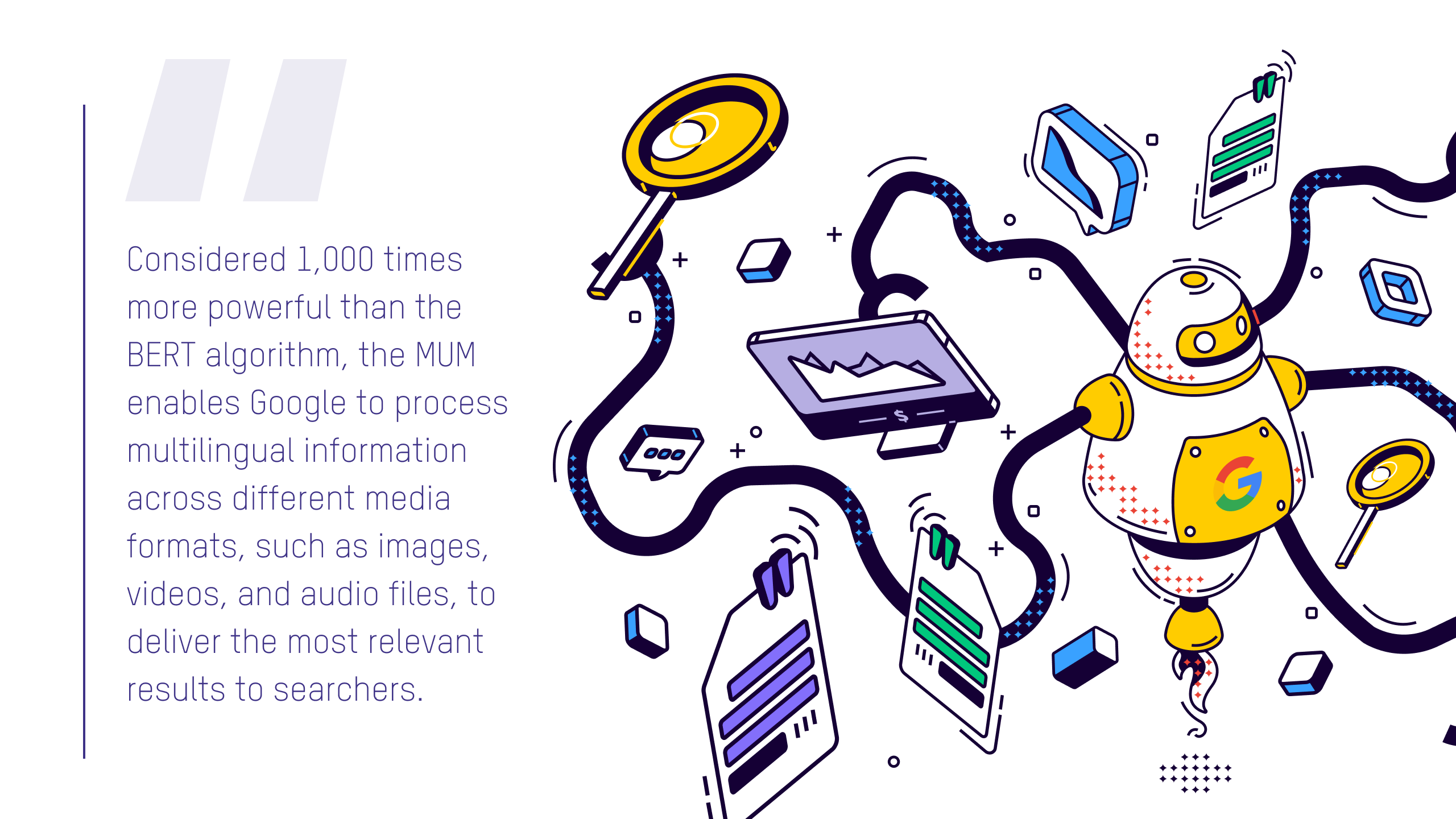This year, Google is set to launch the MUM, a powerful AI that enables the search engine to understand complex search queries across languages and media formats. It marks the beginning of an entirely semantic search experience.
What is the MUM?
The Multitask Unified Model (MUM) is an AI-powered algorithm that can interpret, analyze, and answer complex search queries through a semantic-based approach. A breakthrough in the world of AI, the MUM can determine the context or meaning of queries beyond basic keyword-level understanding. It was first introduced in May 2021 and is expected to be released this year.

How will the MUM change SERPs?
Apart from its groundbreaking processing capabilities, the MUM unveils another innovation—a multimodal interface.
A New Look for SERPs
With the MUM, users should expect a revamped SERP look. The MUM is set to introduce a multimodal layout, wherein information from multiple sources are consolidated in a single SERP result. This means that text-based results will be combined with different media-based data.
This multimodal interface will show a diverse aggregate of various information in different formats from different sources, which is a stark contrast to Google’s existing SERP format. However, the search engine has yet to announce when this new SERP look will debut.
But Google did reveal some groundbreaking features that will soon be available to users. One of the newest features on the MUM that could help improve its overall search experience is the Google Lens, which allows searchers to take a photo and ask a question related to the image.
The search engine also unveiled a recommendation feature called Things To Know, which suggests a stack of information related to their original query.

Google to integrate Google Lens to support multiformat searching. (Source: CNet)

Google to introduce an expanded recommendation system via MUM update. (Source: WordLift)
How will the MUM transform the search experience?
Evidently, Google is moving towards becoming a more semantic search engine. This update will greatly benefit searchers by streamlining their search experience.
More Relevant Traffic
With the MUM, searchers can expect to generate more relevant, specific, and localized answers to their search queries across different formats and languages. For businesses, this can help them bring their content to the precise users that need it, reducing the amount of irrelevant traffic that they get with the current SERPs.
No More Rankings?
However, while it comes with advantages, the MUM also comes with some setbacks. First and foremost, with the MUM in place, the SERP ranking would become a little more complicated. The leaderboard type of search results might become obsolete once this update is fully integrated, so businesses might consider optimizing their content for the multimodal format. Instead of ranking, being featured on the multimodal SERP could be their goal.
How to Optimize for the MUM
While the core SEO practices will still be helpful once Google shifts to a multimodal SERP, it’s clear that businesses must concentrate on establishing more knowledge and relevance within their topic scope.
With MUM’s context-based algorithm, establishing relevance based on keywords will not be enough to get featured. So it makes sense to shift your SEO strategy to a more entity-based approach rather than a keyword-based one. This type of approach would help you focus on context, increasing your chances of appearing on the SERP.
Adding proper markup can also boost your chances of appearing on the multimodal SERP. While this practice is already in use in traditional SEO, it will also be helpful in the MUM rollout. Using schema markup on your written content or inserting closed captions on your videos will allow Google to identify the context of each section and pull that specific segment onto the SERP. Ultimately, it’s best to give context to every part of both your text-based and media-based content.
In addition, understanding your intended readers’ customer journey can also help in creating content optimized for the MUM. With its new Things To Know feature, you can build on your original content to create more pathways for traffic growth. Understanding your customers will help you determine which topics or areas you need to create content about.
While most features of the MUM are still not available, there’s enough time to adjust your SEO strategies to thrive in a more semantic search experience. However, the MUM update doesn’t reduce the importance of other existing Google algorithmic updates.
In SEO, it’s important to optimize for the current trends and changes as this can make an instant impact on your existing SERP performance.



